
- CITY TAXI - TARIFF
- AIRPORT SERVICE - TARIFF
- TOURIST CABS - TARIFF
- E-TICKETS
- LOST & FOUND
- SAFETY MEASURES
- BOOK A CAB ONLINE


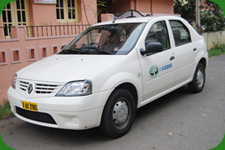


Hampi is a village in northern Karnataka state, India. It is located within the ruins of Vijayanagara, the former capital of the Vijayanagara Empire. Predating the city of Vijayanagara, it continues to be an important religious centre, housing the Virupaksha Temple, as well as several other monuments belonging to the old city.
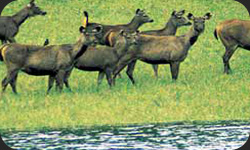
Bandipur National Park (B.N.P.) is one of India's best known protected areas and is an important Project Tiger reserve. It is located in the Chamarajanagar district of southern Karnataka in South India. The park stretches over 874 square kilometres (337 sq mi), protecting the wildlife of Karnataka. This park has boasted a constant rise in Tiger population since then. It is also famous for Sandalwood trees and rare species of Flora.

Belur is a small town located on the banks of River Yagachi, in Hassan district of Karnataka. Belur was the early capital of the Hoysala Empire. Belur is considered as the Banaras of South and is thus also known as Dakshina Varnasi. The main attraction in Belur is the Chennakeshava temple complex dedicated to Lord 'Chennakeshava' (handsome Vishnu) temple. It was built by King Vishnuvardhana of Hoysala Dynasty in the Dravidian Style.
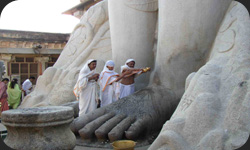
Shravanabelagola is a city located in the Hassan district in the Indian state of Karnataka and is 158 km from Bangalore. The statue of Gomateshwara or Bahubali, at Shravanabelagola is one of the most important Jain pilgrim centers. It reached a peak in architectural and sculptural activity under the patronage of Gangas of Talakad. The 57 ft. (17.5 mtr.) tall magnificient monolithic statue of Gommateshwara Bhagawan Bahubali was consecrated by Chavundaraya, the Prime Minister and Commander-in-Chief in the Talakad Ganga Kingdom in 981 A.D.

Halebidu is located in Hassan District, Karnataka, India. Halebidu (which was previously called Dorasamudra or Dwarasamudra) was the regal capital of the Hoysala Empire in the 12th century. It is home to one of the best examples of Hoysala architecture in the ornate Hoysaleswara and Kedareswara temples. Halebidu literally means ruined city. This name is given because this city was ruined two times by Bahmani Sultanate.

Talakad (also known as Talakadu) is a town on the left bank of the Kaveri river at a spot where the river makes a sharp bend. It is 45 km from Mysore and 185 km from Bangalore in Karnataka, India. A historic site, Talakad once had over 30 temples that today are buried in sand. Now it is a scenic and spiritual pilgrimage center.[1] Here the eastward flowing Kaveri river changes course and seems magnificently vast as here the sand on its banks spreads over a wide area.
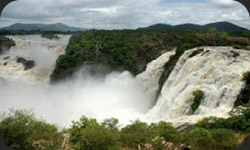
Shivanasamudra is probably the largest waterfall in the region after Jog Falls. The place is also credited for hosting the first hydroelectric project in India. Here, Kaveri splits into two, falls into a valley in two separate places called Gaganachukki and Bharachukki and re-unites downstream. A good lot of water falls down from both the waterfalls. Gaganachukki especially is a steep fall where water gushes down with great velocity. The two waterfalls are around a 15-minute drive apart and make beautiful picnic locations.
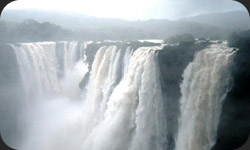
Jog Falls created by the Sharavathi River falling from a height of 253 meters (829 ft) is the highest plunge waterfall in India[1] Located in Shimoga District of Karnataka state, these segmented falls are a major tourist attraction. It is also called by alternative names of Gerusoppe falls, Gersoppa Falls and Jogada Gundi. There are many waterfalls in Asia - and also in India - which drop from a higher altitude.

252 kms from Bangalore and 1525 m above sea level lies Madikeri, the district headquarters of Kodagu. Coorg or Kodagu (originally called Kodaimalenadu) means 'dense forest on steep hill'. Dubbed as the Scotland of India, this town has a lot to offer to the tourist. Misty hills, lush forest, acres and acres of tea and coffee plantation, orange groves, undulating streets and breathtaking views are what make Madikeri an unforgettable holiday destination.
